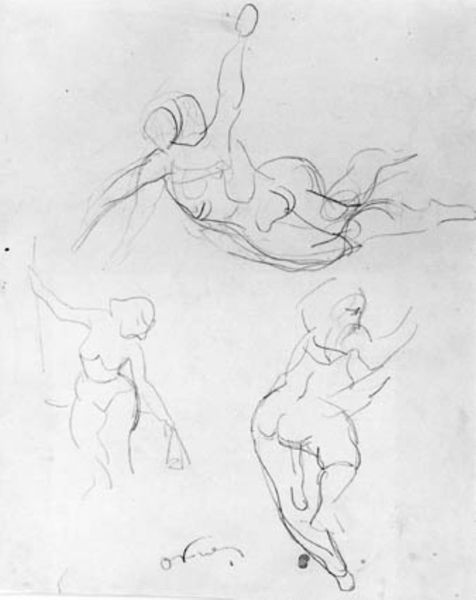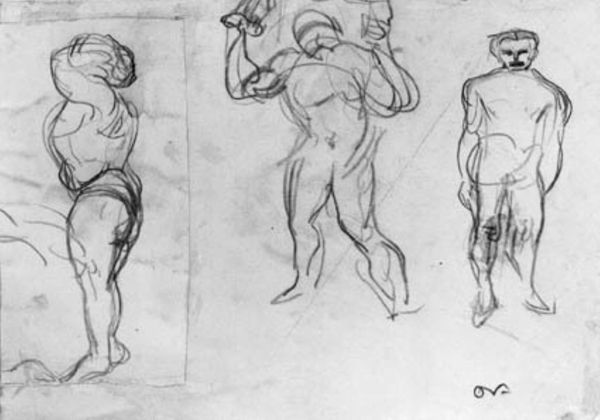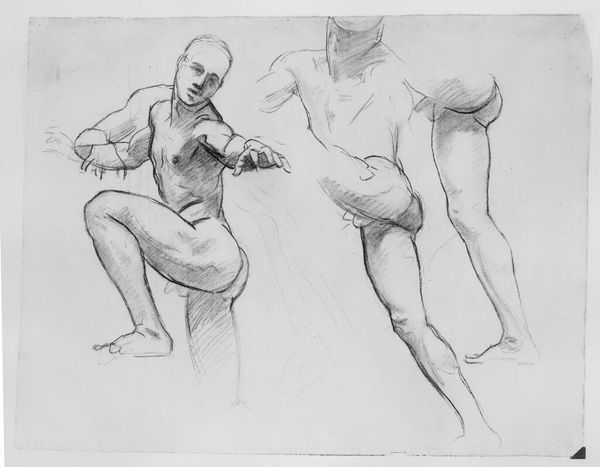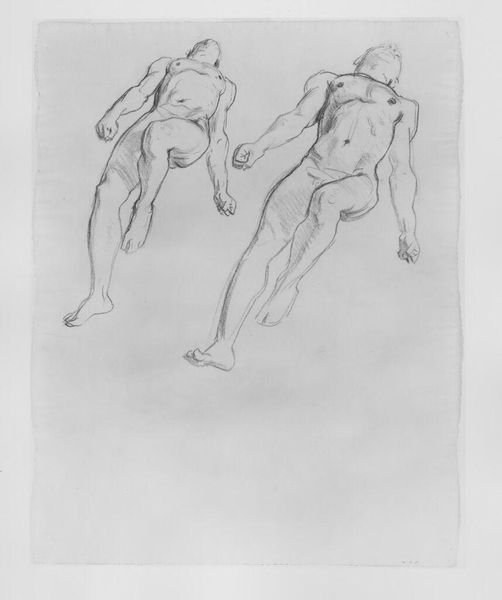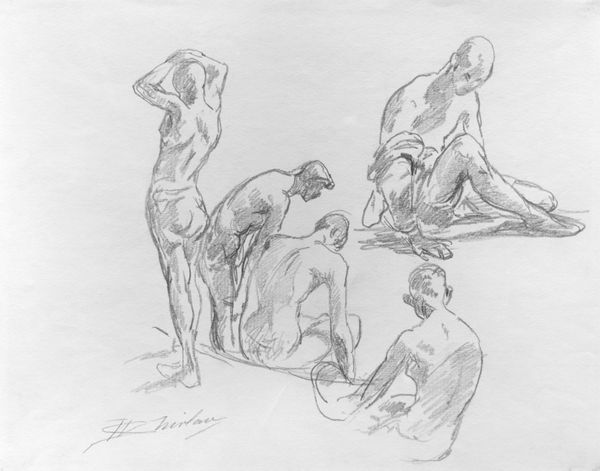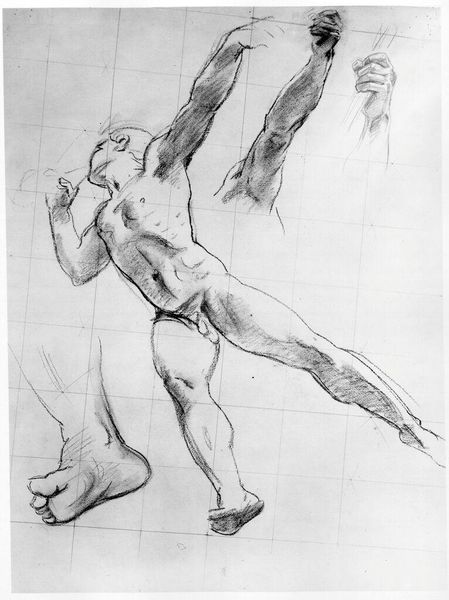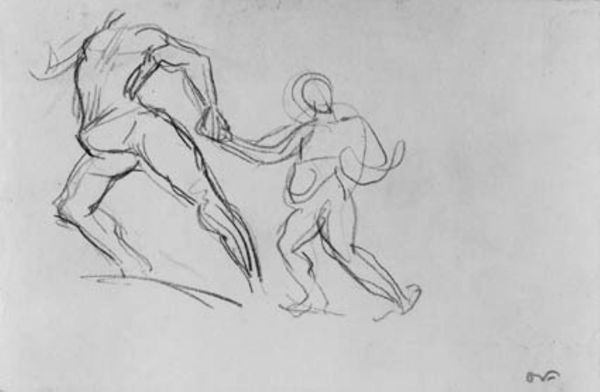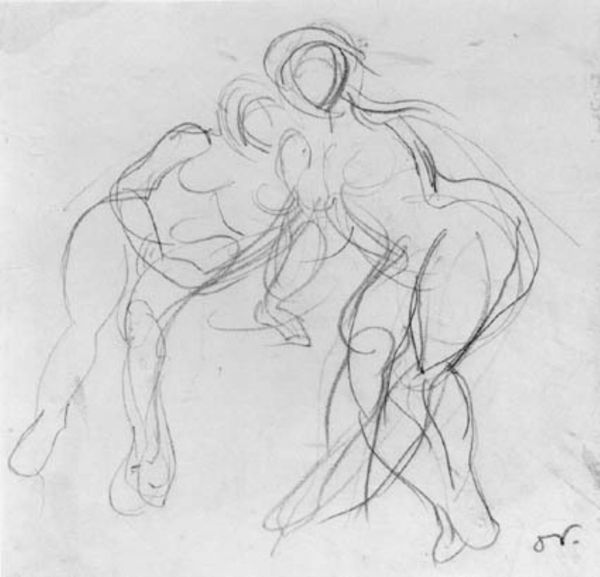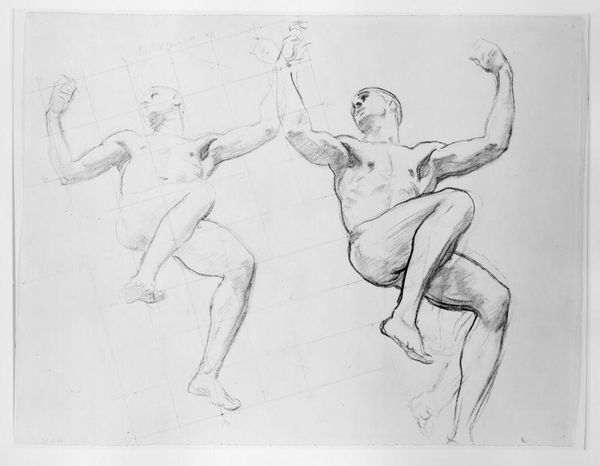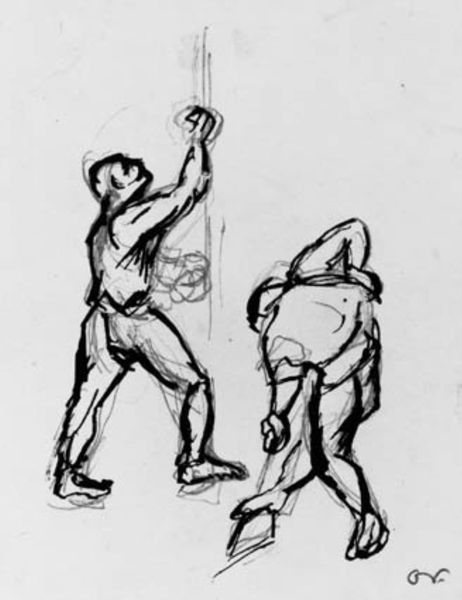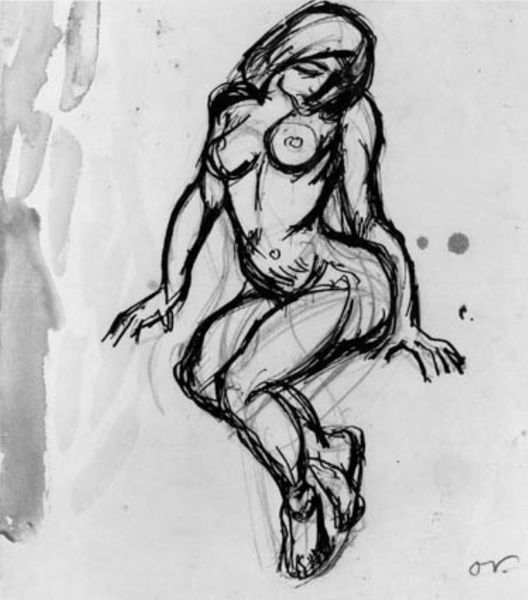
drawing, gestural-painting, pencil
#
drawing
#
figuration
#
gestural-painting
#
pencil
#
expressionism
Dimensions: 116 mm (height) x 142 mm (width) (bladmaal)
Editor: So, here we have Othon Friesz's "Tre figurer i bevægelse.", which translates to "Three Figures in Motion," created sometime between 1906 and 1909, using pencil. It’s at the SMK in Copenhagen. The sketchiness makes it feel... raw, almost urgent. What do you see in this piece? Curator: I see bodies pushing against the boundaries of convention, literally breaking free from rigid forms. Consider the historical moment—the early 20th century, a time of great social upheaval and a questioning of established norms. Doesn’t the gestural style resonate with the burgeoning feminist movements that challenged patriarchal structures and celebrated the liberation of the female form? Editor: I can see that, especially in the figure on the left. But the one in the middle seems almost aggressive. Curator: Precisely! Note the almost violent energy in that central figure. Could that be a manifestation of working-class resistance or perhaps an articulation of nascent anti-colonial sentiment through raw energy? Consider also how expressionism frequently gave voice to previously marginalized perspectives. Editor: I hadn't thought about it that way. It makes the image a lot more complex than I initially perceived. Curator: Exactly! These quick sketches don’t merely depict motion; they encapsulate a period ripe with transformation. The figures actively reject traditional representation and thus invite viewers to confront broader political and cultural discourse. Editor: That's fascinating. I am leaving with a fresh perspective on the power dynamics represented in these bodies and on art as a record and projection of societal forces. Curator: Indeed. It is the layered analysis that grants artwork deeper cultural significance.
Comments
No comments
Be the first to comment and join the conversation on the ultimate creative platform.
